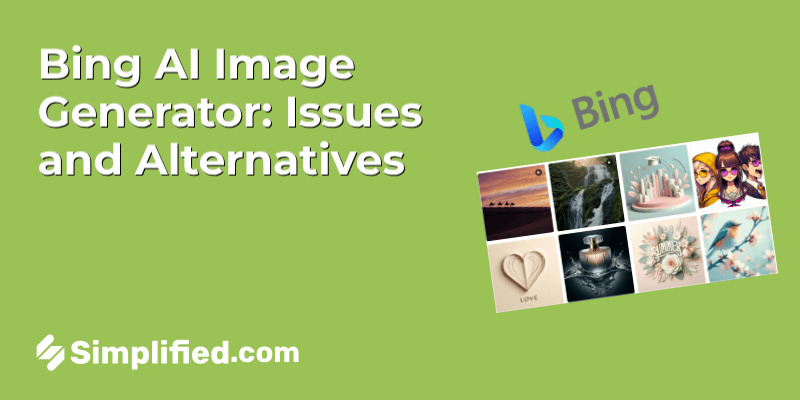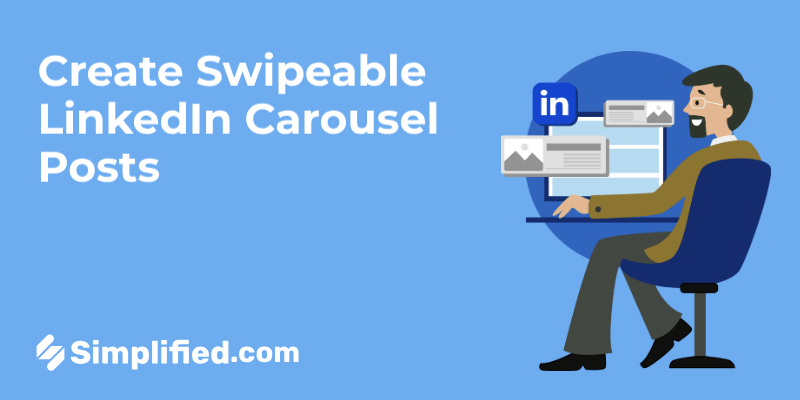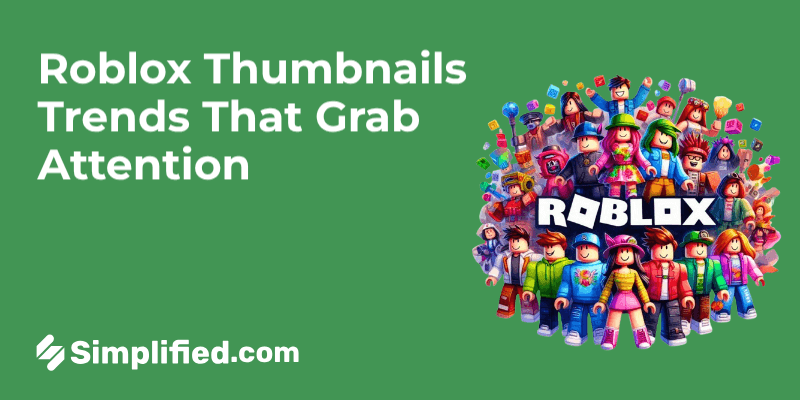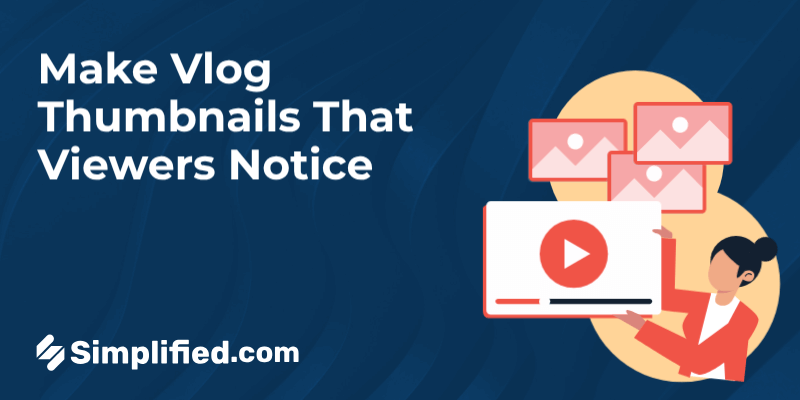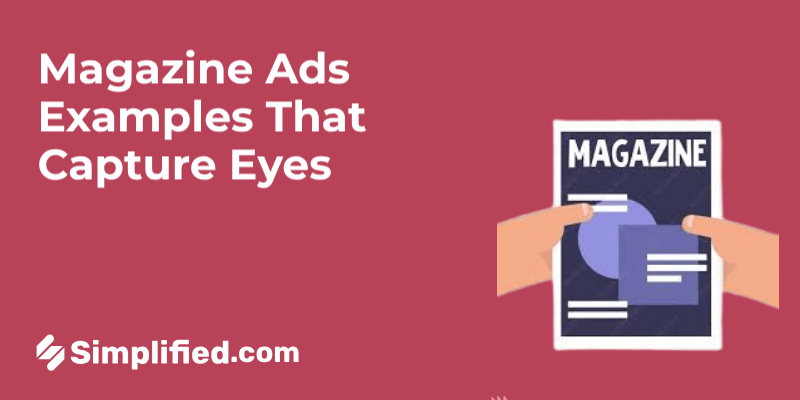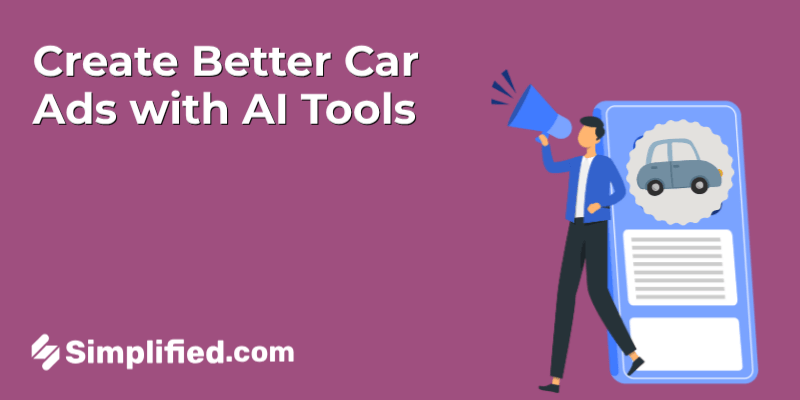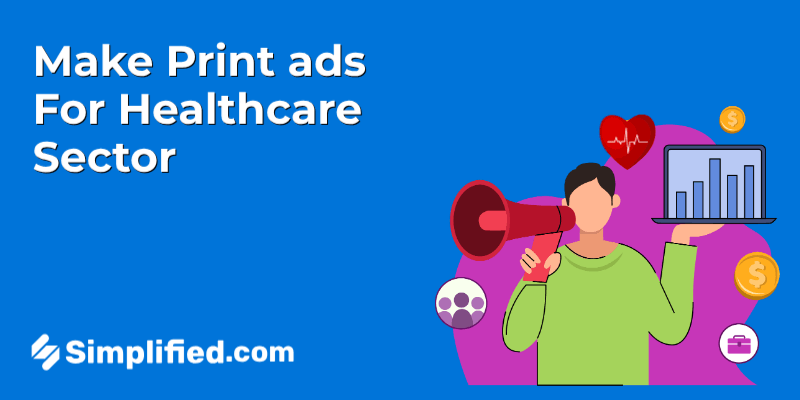
Creating a print ad in the healthcare sector comes with its own set of challenges and opportunities. Understanding your audience and crafting the right message can significantly impact the effectiveness of your advertising efforts.
Targeted advertising in the healthcare sector is more crucial than ever. With the increasing competition and the need for precise communication, understanding how to craft a compelling print ad can make a significant difference.
The healthcare industry presents unique challenges and opportunities when it comes to advertising. On one hand, the sensitive nature of medical information requires careful handling and adherence to strict regulations. On the other hand, effective advertising in this space can lead to improved patient outcomes and increased trust in healthcare providers.
Let’s delve into the importance and the unique aspects of targeted advertising in the healthcare sector.
Why Targeted Advertising Matters
Unlike other industries, healthcare advertising must address a diverse audience, including patients, caregivers, and medical professionals. Adapting your message to resonate with each of these groups ensures that communication remains relevant and engaging. Here are a few reasons why targeted advertising is crucial:
- Precision: Reach the right audience with the right message, minimizing wastage of resources.
- Trust: Build credibility by providing accurate and helpful information.
- Compliance: Adhere to healthcare regulations, ensuring that the advertisement is both ethical and legal.
Challenges and Opportunities
The healthcare sector is not without its hurdles. Here are some of the challenges faced in this field:
- Regulatory Constraints: Stricter rules mean higher scrutiny, which can limit creativity.
- Sensitivity: Handling patients’ emotions and medical issues with care is paramount.
- Diversity: Different demographics require different messaging strategies, adding to the complexity.
However, these challenges also present unique opportunities:
- Educational Content: Providing valuable information can enhance trust and credibility.
- Innovative Solutions: Although creativity is limited by regulations, there is room for innovative ways to deliver compliant and engaging ads.
- Stronger Impact: A well-targeted ad in healthcare can lead to better patient outcomes and more loyal customers.
By understanding these aspects, healthcare marketers can better navigate the complexities of the industry and create effective print advertisements that resonate with their audience.
Bonus: Meta Ad Library: An In-Depth Look Into The Facebook Ad Library
Understanding the Healthcare Audience
Creating effective print advertisements in the healthcare sector requires a deep understanding of your audience. To create compelling messages, it’s vital to identify key demographics and psychographics, emphasize empathy and trust, and research patient needs and concerns.
Identifying Key Demographics and Psychographics
Healthcare audiences are diverse, and understanding their demographics is essential. Key demographics might include age, gender, income level, occupation, and geographic location. For instance:
- Age: Different age groups have different healthcare needs and preferences. Advertisements should resonate with the specific age group you are targeting.
- Gender: Some medical conditions are more prevalent in one gender than the other. Adjusting your message to address these specific conditions can improve the ad’s effectiveness.
- Income Level: Understanding the economic status of your audience can help you create ads that appeal to their financial situation.
- Occupation: Working professionals might have different health concerns compared to retirees or students.
Psychographics delve deeper into the audience’s lifestyle, values, and attitudes. It helps to understand:
- Lifestyle: Whether they lead an active or sedentary life can influence their health outcomes and needs.
- Values: Health-conscious individuals might prefer different healthcare services than those less aware of health benefits.
- Attitudes: Some may be more receptive to preventive healthcare, while others may seek treatment only when necessary.
The Importance of Empathy and Trust in Healthcare Ads
Empathy and trust are critical components in healthcare advertising. Patients are often anxious and vulnerable, making it essential to communicate with sensitivity and assurance. Here are some ways to build trust through your ads:
- Use empathetic design and language to show that you understand their concerns.
- Share testimonials and success stories to illustrate the effectiveness and reliability of your services.
- Highlight the credentials and experience of your healthcare professionals to reinforce trustworthiness.
Researching Patient Needs and Concerns
Understanding the specific needs and concerns of patients is crucial for creating ads that resonate. Conducting research can involve:
- Studying patient reviews and feedback to identify common themes and concerns.
- Engaging in patient surveys to gather direct insights on their healthcare experiences and expectations.
- Monitoring social media and online health forums to observe discussions surrounding health topics.
By comprehensively understanding your audience, infusing empathy and trust into your messaging, and diligently researching patient needs, you will be well-equipped to create impactful and meaningful print advertisements in the healthcare sector.
Bonus: 20 Exquisite Facebook Ad Examples to Inspire Your Campaign
Crafting Clear and Compelling Messages
In healthcare advertising, the clarity and emotional resonance of your message are paramount. Patients often seek information that is both understandable and relatable. This section outlines strategies to ensure your print ads communicate effectively and foster trust.
Simplicity and Clarity
- Use Plain Language: Avoid medical jargon and complex terminology. Instead, use everyday language that your target audience can easily understand. For instance, say “high blood pressure” instead of “hypertension.” This approach enhances comprehension and ensures your message is accessible to a broader audience.
- Focus on a Single, Clear Message: Each advertisement should convey one primary message to prevent confusion. Whether it’s promoting a new service, encouraging preventive care, or highlighting patient success stories, a singular focus ensures that your audience grasps the intended takeaway.
- Highlight the Main Message: Place the core message prominently within the ad—ideally in the headline or a highlighted section. This technique draws attention and reinforces the key point you want readers to remember.
Emotional Engagement
- Incorporate Storytelling: Sharing real-life patient stories can humanize your services and create an emotional connection with readers. Narratives that depict patient journeys, challenges overcome, and positive outcomes can make your services more relatable and trustworthy.
- Highlight Patient Testimonials: Featuring testimonials from satisfied patients adds authenticity to your message. These endorsements serve as social proof, reassuring potential patients of the quality and reliability of your services. Ensure that testimonials are genuine and, where possible, include specific details about the patient’s experience.
- Use Relatable Imagery: Accompany stories and testimonials with images that reflect the diversity and demographics of your target audience. Visuals that mirror the reader’s own experiences can enhance the emotional impact of your message.
By adhering to these principles of simplicity, clarity, and emotional engagement, your healthcare print advertisements can effectively communicate your message and resonate with your intended audience.
Bonus: 25 Exemplary Facebook Carousel Ads Examples To Inspire Your Marketing Strategy
Designing Visually Appealing Advertisements
In healthcare advertising, visual design plays a pivotal role in conveying trust, professionalism, and empathy. A well-crafted print ad should not only be aesthetically pleasing but also resonate with the target audience’s needs and values.
Key Design Principles for Healthcare Print Ads
- Maintain Clarity and Simplicity: Use clean layouts with ample white space to enhance readability.
- Choose Appropriate Imagery: Select images that reflect the diversity and experiences of your target audience, fostering a sense of connection.
- Consistent Branding: Ensure that colors, fonts, and logos align with your organization’s brand guidelines to build recognition and trust.
- Highlight Key Information: Use headings and bullet points to draw attention to essential details, making it easier for readers to digest information quickly.
Using Simplified AI Print Ad Generator
To streamline the design process and ensure professional-quality results, consider using Simplified AI Print Ads Generator. This tool assists in creating customized print ads that align with your healthcare marketing objectives.
Steps to Create a Healthcare Print Ad Using Simplified:
- Access the Tool
Navigate to Simplified AI Print Ads Generator. - Initiate the Design Process
Click on the “Generate with AI” option, then select “AI Ad Generator” to begin. - Input Ad Details
Provide essential information such as the ad’s topic or theme and define your target audience by specifying demographics like location, age, and gender. - Customize Design Elements
Choose a layout, color scheme, and typography that align with your brand identity and resonate with your target audience. - Generate Ad Variations
Click on “Generate” to produce multiple ad versions, each featuring unique copy and visuals. - Refine and Personalize
Review the generated ads and customize them as needed to ensure they meet your brand standards and effectively communicate your message. - Download and Distribute
Once satisfied with the final design, download the print-ready ad for distribution across your chosen channels.
By integrating this tool into your advertising strategy, you can easily create professional and impactful print ads tailored to the healthcare sector.
Choosing Appropriate Imagery and Colors
The imagery and colors you select can significantly impact the perception of your ad. In healthcare, it’s essential to evoke feelings of health, cleanliness, and trust. Here’s how:
- Imagery: Use high-quality images that are relevant to the healthcare sector. This could include images of happy, healthy individuals, professional medical staff, or caring interactions. Ensure that the images are inclusive and reflect the diversity of your audience.
- Colors: Choose colors that evoke feelings of calm and trust, such as blues, greens, and whites. These colors are often associated with cleanliness, professionalism, and serenity. Avoid using overly vibrant or aggressive colors that might be distracting or unsettling.
Bonus: Best AI Ad Generators That Will Fast-Track Your Next Marketing Campaign
Creating Attention-Grabbing Headlines and Call-To-Actions
Your headline is one of the first elements that your audience will see, so it needs to be compelling. An effective headline should be clear, relevant, and drive curiosity. It should directly address the needs or concerns of your target audience.
Your call-to-action (CTA) should be distinct and guide the reader on what to do next. Whether it’s signing up for a newsletter, calling for a consultation, or downloading a brochure, make sure the CTA is easy to find and follow.
- Clarity: Ensure your headline and CTA are straightforward and unambiguous. Avoid jargon or complex language that might confuse the reader.
- Relevance: Align your message with your audience’s specific needs. Highlight the benefits they will gain by taking the desired action.
- Visibility: Use design elements such as bold fonts or buttons to make your CTA stand out from other text. Position it in places where the eye naturally falls, such as the top or bottom of the ad.
Navigating Compliance and Ethics
Creating print advertisements for the healthcare sector requires careful consideration of both compliance and ethical standards. Ensuring that your ad not only meets legal guidelines but is also truthful and respectful can safeguard your organization from potential pitfalls. Here’s how to navigate these crucial aspects effectively:
Understanding Legal and Ethical Guidelines for Healthcare Advertising
The healthcare industry is highly regulated. Advertisements must adhere to legislation put forth by both federal and state authorities, such as the FDA and the FTC. Equally important are the ethical guidelines established by organizations like the American Medical Association (AMA). It’s crucial to:
- Ensure all claims are supported by valid, scientific evidence.
- Understand the specific advertising guidelines provided by relevant regulatory bodies.
- Avoid exploiting vulnerable populations or making unsubstantiated health claims.
Ensuring Accuracy and Avoiding Misleading Statements
Accuracy in healthcare advertising is non-negotiable. Misleading statements can result in severe penalties and loss of trust. Key practices include:
- Clear and concise language that accurately reflects the product or service.
- Avoiding exaggerated benefits or guarantees that are not substantiated.
- Regularly reviewing content for any potential inaccuracies before publication.
Including Essential Disclaimers and Consent Details
Disclaimers play a significant role in maintaining transparency and trust. They inform consumers about the limitations and risks associated with the healthcare product or service. Be sure to:
- Include necessary medical disclaimers specifying any conditions or potential risks.
- Provide consent information clearly, making it easy to understand and accessible to all readers.
- Ensure that disclaimers are visible and not hidden in fine print.
By following these guidelines, you can create trustworthy and compliant healthcare print advertisements that not only adhere to regulations but also provide value and clarity to your audience.
Bonus: The Ultimate Guide to Designing Facebook Ads
Distribution and Placement Strategies
When it comes to creating an impactful print ad for the healthcare sector, a well-considered distribution and placement strategy is crucial. Selecting the right publications and formats, timing your ad placements, and utilizing cross-channel promotion are key components. Here’s how you can maximize the success of your print advertising campaign:
Selecting the Right Publications and Formats
The success of your print ad largely depends on the publications and formats you choose. Begin by identifying publications that have a strong presence in the healthcare sector and reach your target audience. Consider industry-specific magazines, medical journals, and professional healthcare newsletters. Evaluate the reputation, readership demographics, and circulation of these publications to ensure your ad reaches the right eyes.
In addition to selecting appropriate publications, consider various formats such as full-page ads, half-page ads, inserts, and special supplements. Each format has its own advantages, and the right choice can enhance the visibility and effectiveness of your ad.
Timing Your Ad Placements for Maximum Impact
Timing is everything when it comes to ad placements. Align your ad schedule with key dates and events in the healthcare industry such as medical conferences, health awareness months, or major product launches. Placing your ad during these peak times can increase its relevance and reach.
Also, consider the publication’s release schedule – whether it’s monthly, bi-monthly, or quarterly – and plan your ad placements accordingly. Optimal timing ensures your message doesn’t get lost and captures the attention of your audience when they are most engaged.
Utilizing Cross-Channel Promotion for Broader Reach
While print ads are a powerful tool, combining them with other channels can amplify their impact. Incorporate cross-channel promotion by linking your print campaigns with digital efforts such as social media posts, email newsletters, and blog articles. This integrated approach helps in reaching a broader audience and reinforces your message across multiple platforms.
- Social Media: Share behind-the-scenes content or excerpts from your print ad on platforms like LinkedIn, Facebook, and Twitter to create buzz.
- Email Campaigns: Include a snippet or an image of your print ad in newsletters sent to your mailing list to drive engagement.
- Website: Feature your print ad on your website or create a dedicated landing page that provides more information and engagement opportunities.
By using cross-channel promotion, you can extend the life of your print ad and create a cohesive narrative that resonates with your audience.
Bonus: 14 Tips To Create Google Ads Headlines
Measuring and Analyzing Ad Performance
To ensure your print ad campaign in the healthcare sector is successful, it’s critical to measure and analyze its performance effectively. This process involves setting clear objectives, utilizing various techniques to track effectiveness, and making data-driven adjustments. Here’s how:
Setting Clear Objectives and KPIs for Your Print Ad Campaign
Before launching your print ad campaign, it’s crucial to establish clear objectives and Key Performance Indicators (KPIs) to measure success. These might include:
- Increasing patient inquiries and appointments
- Enhancing brand awareness within the target demographic
- Driving traffic to your healthcare facility’s website
- Generating a specific number of conversions or engagement
Setting these objectives provides a roadmap for your campaign and helps in aligning your efforts to achieve tangible results.
Techniques for Tracking and Analyzing Ad Effectiveness
Tracking the performance of a print ad can be challenging but is achievable with a mix of traditional and innovative techniques. Consider the following methods:
- Unique Phone Numbers and URLs:Use specific phone numbers and URLs in your ads to track the sources of inquiries and traffic.
- Coupon Codes:Incorporate unique coupon codes in your print ads to see how many people use the offer.
- Surveys and Feedback Forms:Direct patients to surveys or feedback forms where they can indicate how they heard about your services.
- Customer Tracking:Use Customer Relationship Management (CRM) systems to track new customers and understand how they were acquired.
Employing these techniques can provide insightful data regarding the effectiveness of your ads.
Making Data-Driven Adjustments and Improvements
Once you’ve gathered and analyzed the data, it’s essential to make informed adjustments and improvements. Here’s how you can proceed:
- Identify which ads and messages resonate the most with your audience.
- Assess the return on investment (ROI) by comparing the costs of the ad campaign to the revenue generated from it.
- Refine your target audience based on the data collected. Focus on demographics that show the most engagement.
- Test different ad designs and copy to see which elements work best.
Making adjustments based on data allows for continual improvement, ensuring your print ad campaigns remain effective and aligned with your goals.
Set your healthcare print ad campaigns up for success by setting clear objectives, employing robust tracking techniques, and making evidence-based adjustments.
Conclusion
Creating effective healthcare print ads requires a deep understanding of the target audience and a strategic approach. As we have explored, incorporating clear and concise messaging, engaging visuals, and a compelling call to action can significantly influence the success of your print ads. It’s essential to remain compliant with healthcare regulations and to keep the information honest and transparent.
Don’t forget to continuously evaluate and refine your advertising efforts through feedback and performance metrics. By staying attuned to what resonates with your audience and making necessary adjustments, you can improve the impact of your advertising campaigns.
FAQs on Healthcare Print Ads
1. Why is print advertising still relevant in healthcare marketing?
Print advertising remains a trusted medium, especially among older demographics. Studies indicate that 82% of consumers trust print ads, and direct mail campaigns can yield a return on investment of approximately 120%.
2. What are the key components of an effective healthcare print ad?
An impactful healthcare print ad should feature:
- Clear and concise messaging
- Visually appealing design
- Relevant imagery
- A strong call to action
- Compliance with healthcare advertising regulations
Avoiding medical jargon and focusing on patient benefits can enhance the ad’s effectiveness.
3. How can I ensure my healthcare print ad complies with regulations?
Ensure that all claims are truthful and substantiated. Avoid deceptive language and provide clear information about services or products. Consulting with legal or compliance experts can help navigate specific regulatory requirements.
4. How do I measure the success of my healthcare print ad?
Track metrics such as
- Response rates (e.g., calls, inquiries)
- Website traffic increases
- Appointment bookings
- Patient feedback
Including unique contact details or promotional codes can help attribute responses directly to the ad.
5. Can I create a healthcare print ad without professional assistance?
Yes, tools like Simplified’s AI Print Ads Generator can assist in creating professional-quality ads. However, for complex campaigns or to ensure compliance with specific regulations, consulting with marketing professionals may be beneficial.
6. How often should I update my healthcare print ads?
Regularly reviewing and updating your print ads ensures that the content remains relevant and effective. Consider revising ads quarterly or in response to significant changes in services, target audience needs, or healthcare regulations.




